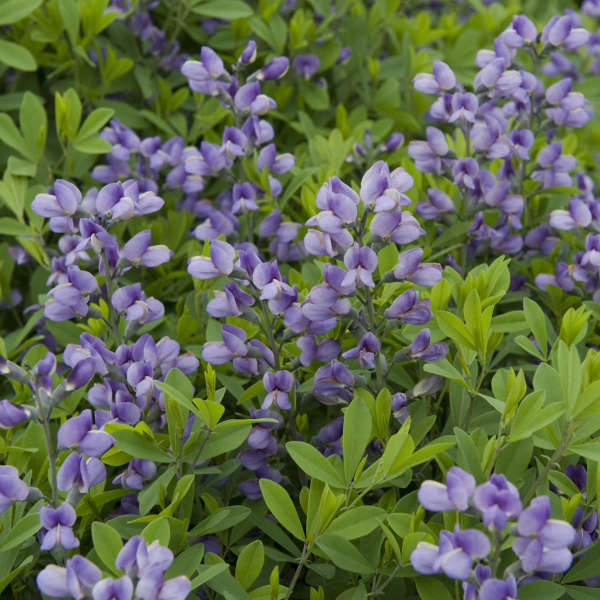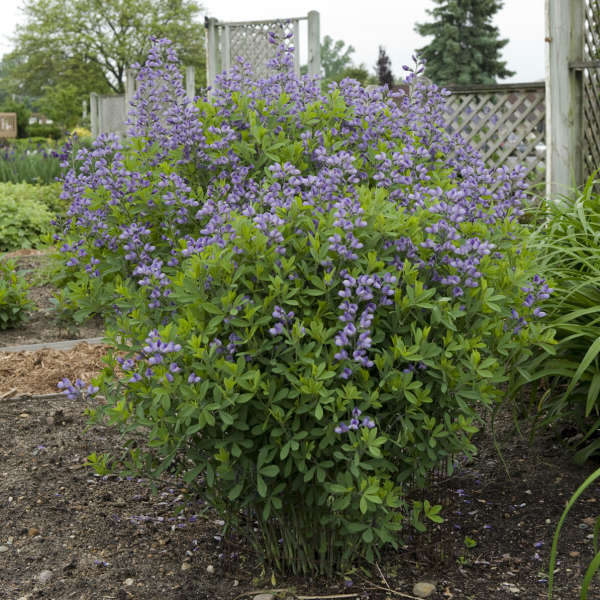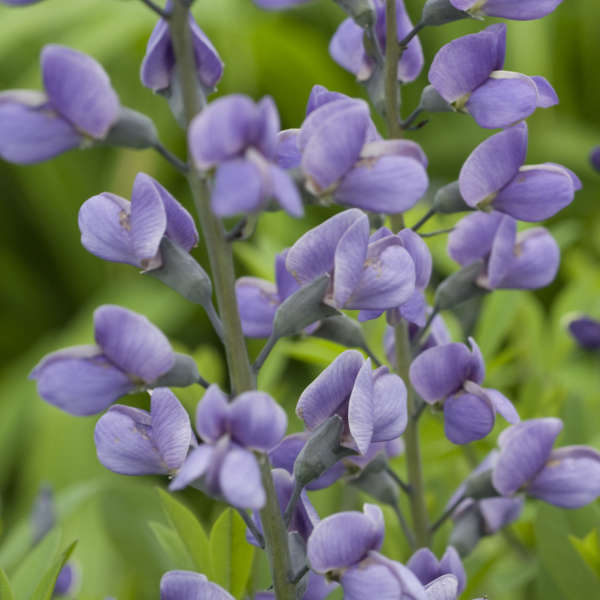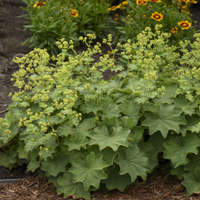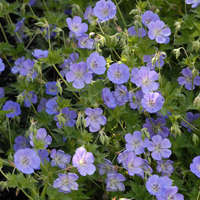Baptisia 'Purple Smoke'
Common Name: False Indigo
A naturally occuring hybrid of Baptisia alba and Baptisia australis, found by Rob Gardner, former curator of the North Carolina Botanical Gardens.
Baptisia 'Purple Smoke' is a distinctive perennial that produces enchanting smoky violet flowers with a purple eye on strongly upright, charcoal-grey stems up to 1 1/2 feet long. They are held just above the dense, bushy mounds of grey-green foliage from mid to late spring. Mature plants of 3-4 years can bear over 50 blooming stalks!
This cultivar seldom, if ever, produces seed pods in fall.
Baptisia australis is native to the prairies of North America, so it is easy to grow and will thrive with little maintenance. There are many potential applications in the landscape including meadow plantings, as a backdrop in borders, or as a specimen. Plants are very long-lived once established.
